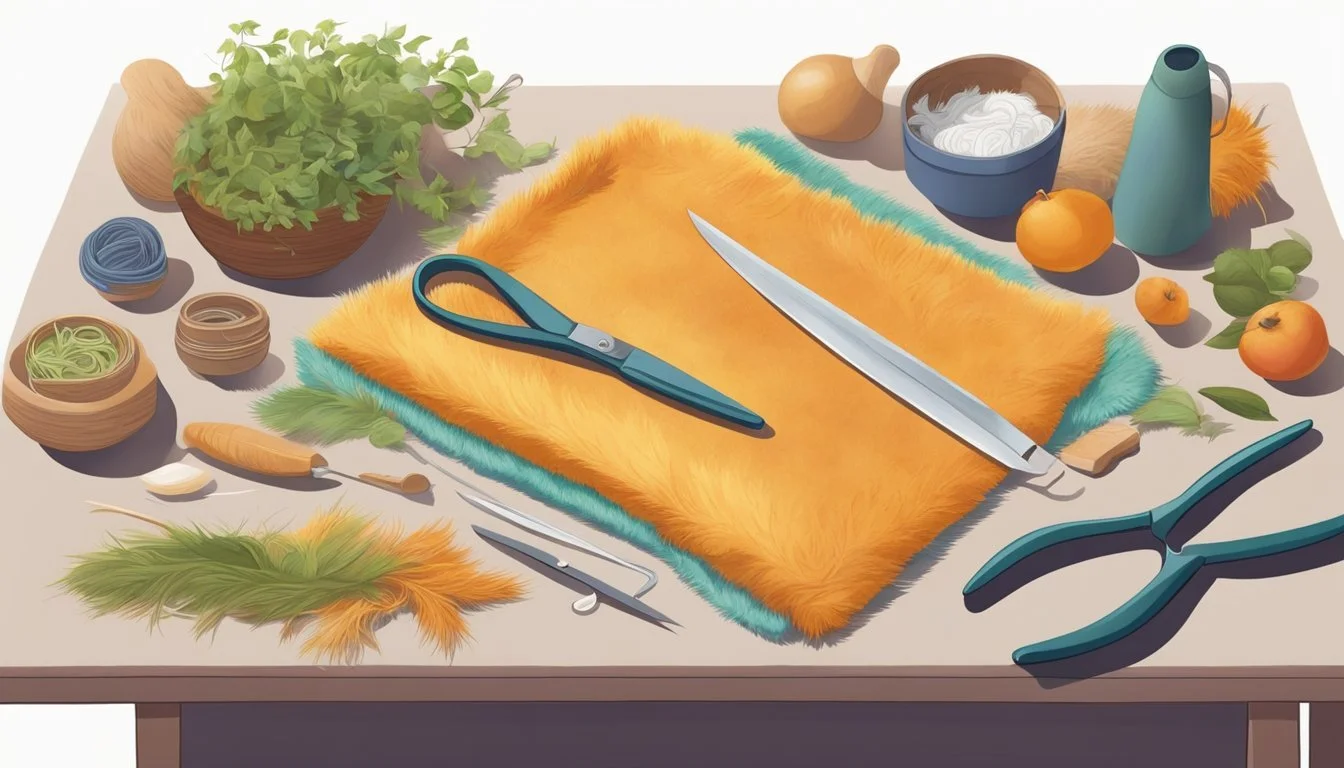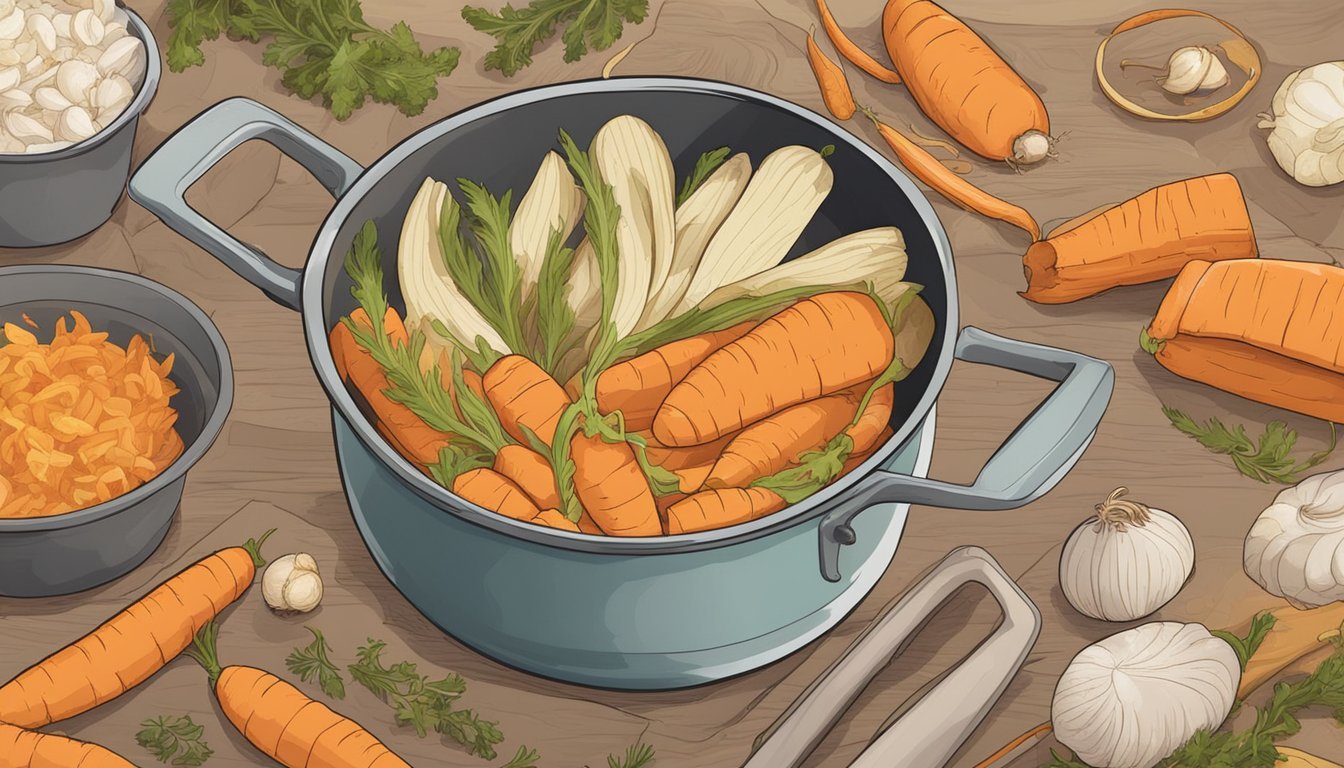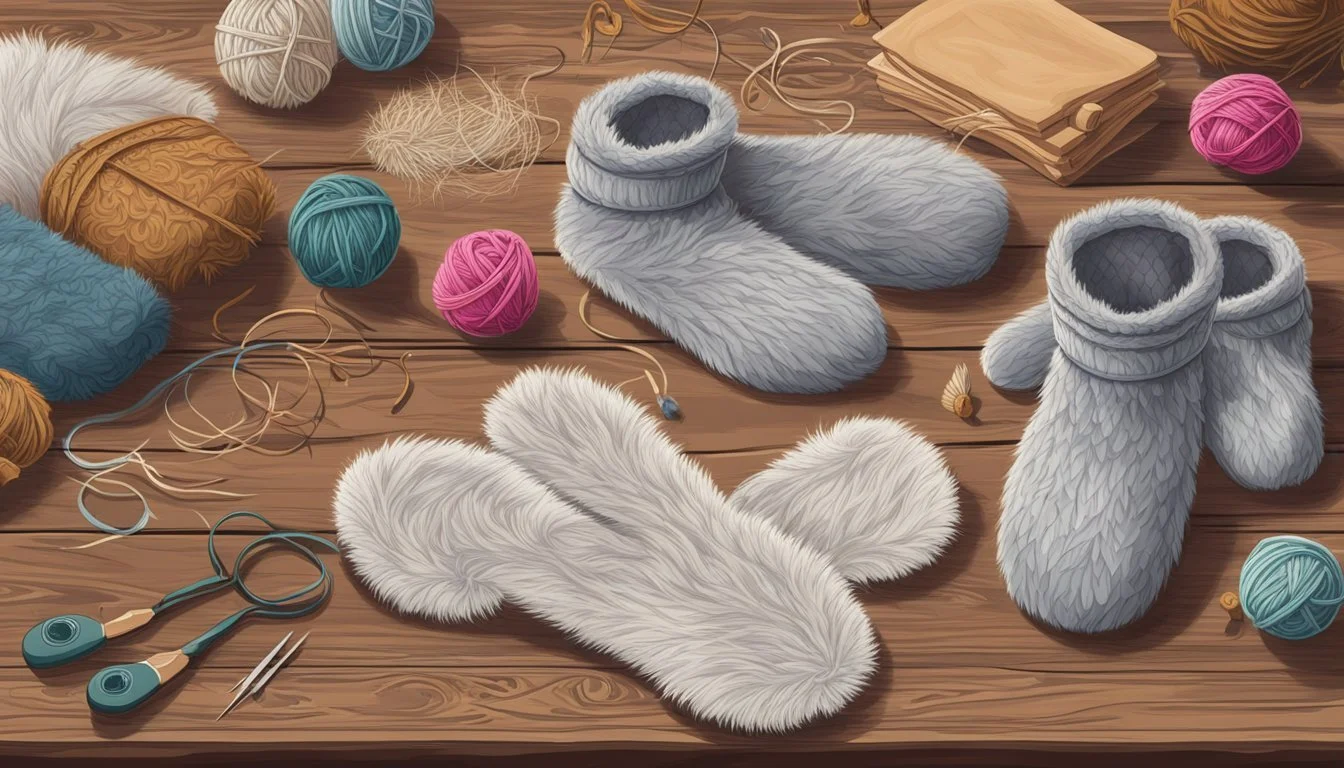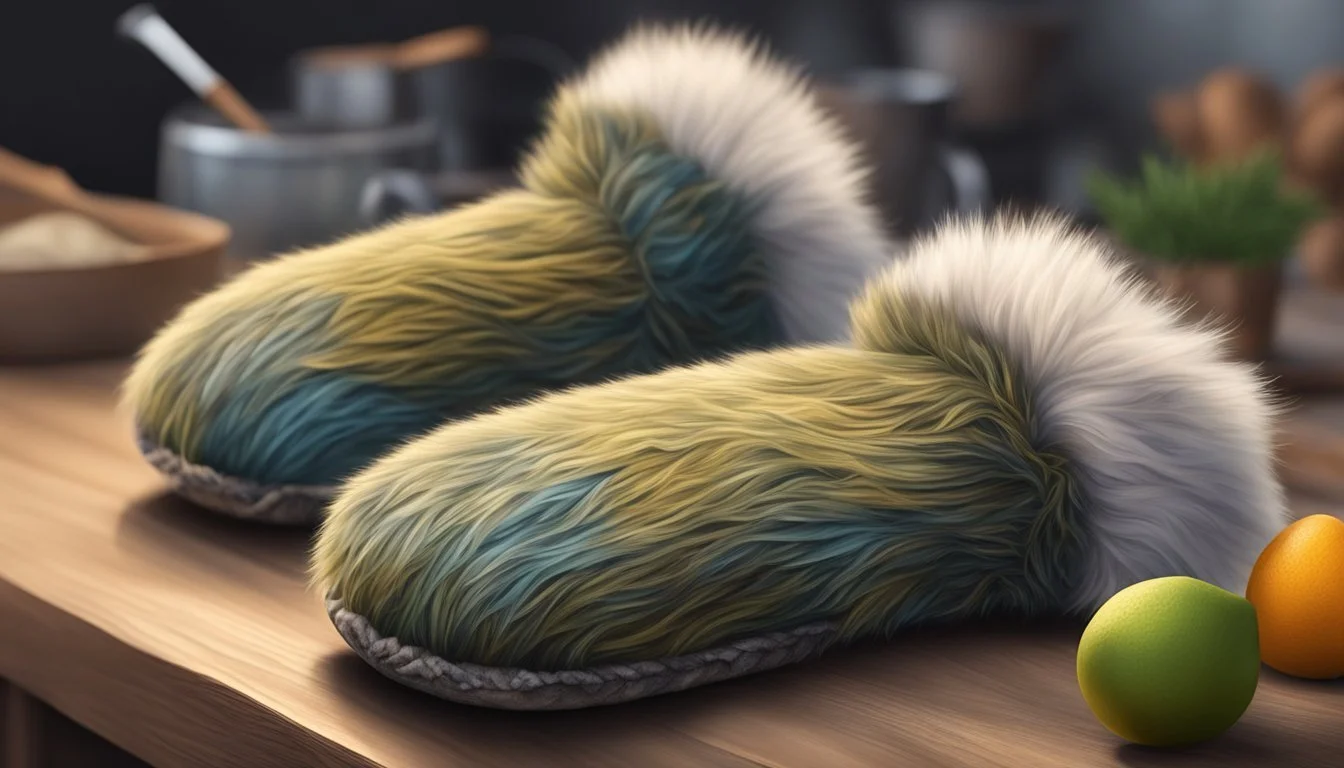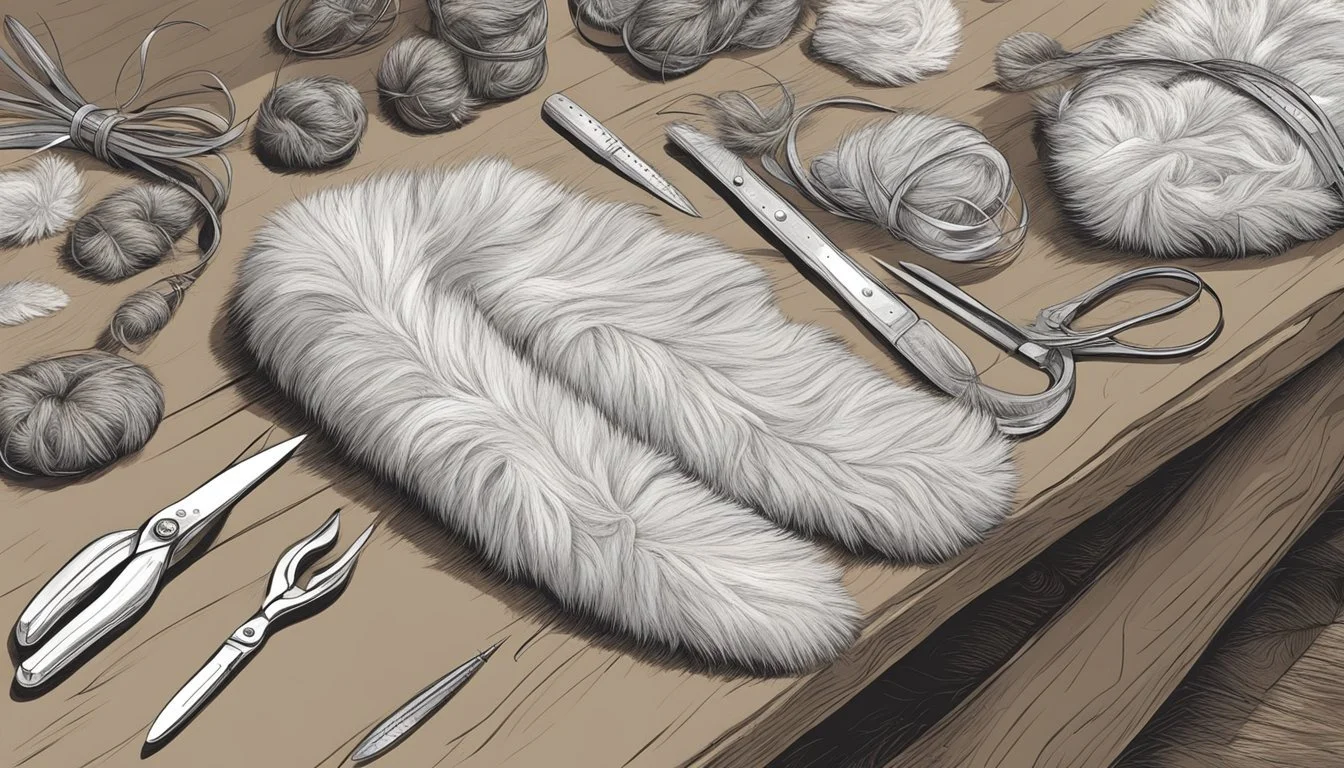The Art of Making Rabbit Fur Mittens
Sustainable Crafting with Kitchen Scraps
Crafting mittens from kitchen scraps is a resourceful endeavor that elevates the recycling ethos to an art form. Utilizing rabbit fur, a byproduct from food preparation or other projects, not only aligns with sustainable practices but also offers a personalized touch to winter apparel. The construction process presents an opportunity for individuals to engage in creative repurposing, transforming what might be waste into garments that bear the warmth and comfort of homemade craftsmanship.
While making rabbit fur mittens can seem daunting, it's a practical project suitable for those with basic sewing skills. The key to success lies in precision and patience. Starting with accurate pattern-making ensures the mittens will fit correctly. This can involve creating a mock-up with scrap fabric to refine the design without risking valuable fur. Taking into account the direction of the fur and cutting patterns accordingly maximizes the natural insulation rabbit fur provides.
Understanding the Basics
In creating rabbit fur mittens from kitchen scraps, one must appreciate the essential components, select quality materials, and use the correct tools. This section dives into the core aspects necessary for crafting durable and warm mittens.
Anatomy of a Mitten
The basic anatomy of a mitten includes a large pocket for the four fingers and a separate space for the thumb, providing warmth and dexterity. While designing, one should consider the grain of the fur to ensure all fibers align in a single direction for consistency in appearance and feel.
The Importance of Quality Material
Quality materials are vital for the longevity and comfort of mittens. Rabbit pelts are preferred for their softness and insulating properties. When preparing the pelt, one should preserve the leather integrity by carefully removing meat and fat residues, ensuring a clean base for sewing.
Determining Grain Direction: Check the way fur naturally lays to dictate cut and assembly.
Measuring Circumference: Accurate measurements around fingers and palm guarantee proper fit.
Tools of the Trade
Tailoring rabbit fur mittens requires specialized tools tailored to the nature of the material:
Needles: Glovers’ or leather needles are essential for piercing the tough hide.
Cutting Tools: A sharp razor blade is necessary to cut the pelt without damaging fur.
Marking Tools: Use a felt-tip pen to trace patterns onto the hide's bare side.
Sewing Equipment: A durable thread capable of holding leather pieces together is a must, alongside an option for a sewing machine designed for leatherwork.
Hammer: Useful to carefully flatten seams and ensure a smooth finish.
By adhering to these basics, crafters can create functional and aesthetically pleasing mittens, turning mere scraps into treasures.
Preparation of Materials
Crafting rabbit fur mittens from kitchen scraps involves a thorough process of sourcing materials, prepping the fur, and carefully assembling the pieces. Each step requires attention to detail to ensure the final product is both durable and comfortable.
Sourcing Kitchen Scraps
The homesteader can utilize kitchen scraps from meat rabbits, specifically the pelts that are often discarded after processing the meat. They should ensure that these pelts are fresh and have minimal damage to provide quality material for the mittens.
Cleaning and Tanning
Once the scraps are sourced, they must be cleaned and tanned to preserve the fur and prepare it for use. Tanning involves:
Thorough washing to remove any debris.
Applying a tanning solution which can be made from household ingredients or purchased.
Letting the pelts dry out completely before the next stage.
This process transforms the raw scraps into durable, workable material.
Cutting and Piecing Fur
Using a sharp razor blade, the tanned pelts are then cut into the shape required for the mittens. Following a specific pattern helps with piecing together the fur correctly:
Trace pattern pieces on the pelt's skin side, paying attention to the direction of the fur.
Use clips to hold the pieces as you sew, avoiding slippage.
Piece together with strong needle and thread, making sure the fur aligns properly for a seamless finish.
Mitten Design and Patterns
When making rabbit fur mittens from kitchen scraps, the crafter must carefully select and trace mitten patterns. Precision in pattern size and shape ensures a comfortable fit and efficient use of materials.
Choosing the Right Pattern
One must choose a pattern that best suits the size and shape of one's hand. Ideally, the pattern should allow for movement and comfort without being excessively loose. Crafters often utilize standard mitten patterns available online or in crafting books. They should look for a pattern that accounts not only for the size of their hand but also for the addition of a warm lining. It's recommended to use a felt-tip pen for tracing to ensure that marks are visible on both light and dark materials.
Note: For rabbit fur mittens, adding a seam allowance around the pattern is crucial to account for the fur's thickness.
Tracing and Cutting Patterns
With the selected pattern in hand, the next step is tracing and cutting. One needs to transfer the pattern onto the selected inner lining material, which could be a soft fleece or a robust fabric like canvas. Here's a step-by-step approach to ensure accuracy and precision:
Lay the lining fabric onto a flat surface.
Secure the pattern onto the fabric using tape, if necessary, to prevent slipping.
Carefully trace the pattern using a felt-tip pen, ensuring clean and visible lines.
Cut the pattern out using fabric scissors, following the traced lines closely to maintain the integrity of the design.
Tip: Always test the lining's fit before cutting into the rabbit fur; adjustments to the patterns are easier to make on lining fabric.
Sewing and Assembly
Sewing and assembling rabbit fur mittens involves precision in stitching techniques, carefully attaching the lining, and applying final touches to ensure durability and comfort. The maker must choose the right stitch for securing the seams and consider the incorporation of lining and batting for added warmth.
Stitching Techniques
The proper stitching method is crucial for the integrity of the mittens. The whip stitch is commonly used owing to its simplicity and effectiveness in joining the pelt pieces together. When sewing:
Use strong thread suitable for fur and leatherworking.
Maintain even tension to prevent puckering.
Secure the seams well to avoid tearing, using a:
Needle Size Thread Type Stitch Length Small Synthetic wax 1/8" - 1/4"
Attaching the Lining
The lining not only provides comfort but also insulation. To attach it:
Select a material that complements the fur's warmth, such as wool or fleece.
Cut the lining following the mitten's pattern, then hand-sew it to the fur, ensuring the seams remain hidden.
For added insulation, consider integrating a layer of batting between the lining and the fur.
Final Touches
Once the mittens are sewn and lined, examining the details ensures a professional finish. Trim any loose threads and inspect the mittens for any gaps in the seams that need reinforcement. A fine leather conditioner can be applied to the seams to protect the stitching and maintain the flexibility of the leather.
Finishing and Decoration
When crafting rabbit fur mittens from kitchen scraps, the finishing touches not only enhance the aesthetic appeal but also give these handmade items a lasting durability. This final phase is where creativity can shine, ensuring each pair of mittens is both distinctive and personal.
Crocheting Edges
To create a professional and durable finish, one might crochet the edges of the rabbit fur mittens. This technique involves using a crochet hook to loop and interlock yarn or thread into a decorative edge. The specifics required for crocheting edges on fur mittens are:
Choose a yarn color that complements the fur.
Use a simple slip stitch or single crochet for a neat edge.
By doing so, one not only adds a charming handmade touch but also secures the seams against wear and tear.
Adding Personal Touches
Personalizing rabbit fur mittens can transform them into a unique gift idea. Incorporating personalised tips ensures that the mittens hold sentimental value. Here are some ways to infuse personal character into the mittens:
Embroidery: Stitch initials or a small design onto the fur or the inside lining.
Beadwork: Hand-sew beads along the edges or create patterns on the back of the mittens.
Fabric Accents: Add contrasting fabric patches for a pop of color or texture.
Each method emboldens the maker's signature style, rendering the mittens one-of-a-kind.
Beyond Mittens
Crafting with rabbit fur extends well beyond mittens, providing an array of possibilities for both utility and aesthetic enhancement in everyday items. Discerning craftsmen can transform kitchen scraps and rabbit fur into a unique collection of practical and decorative objects.
Expanding to Other Fur Projects
One may venture into the world of hats and coats, seeing these as natural extensions of the mitten-making skillset. Hats, ranging from the classic trapper to a modern beanie, require a similar attention to lining and warmth retention. In making coats, designers must consider the drape and wear of the larger garment pieces, ensuring both comfort and style.
Bedspreads and pillows, adorned with rabbit fur, bring a touch of luxury to the home. These items necessitate a different approach, focusing on the careful piecing together of larger fur panels.
For a playful touch, toys can be fashioned from leftover fur scraps, requiring minimal materials but offering maximum delight.
Homesteader’s Guide to Rabbit Fur
Homesteaders raise rabbits not only for their meat but for their pelts as well. Here lies the crux of self-sufficiency: using every part of the animal with respect and ingenuity.
Raising rabbits provides a renewable source of material for projects. Each rabbit can yield enough fur for multiple small clothing items or several larger accessories.
Those who take on such projects discover a rewarding blend of tradition and modernity, crafting timeless pieces that echo the homesteading ethos.
Selling Your Creations
When one crafts rabbit fur mittens from kitchen scraps, the journey from creation to sale involves more than just the crafting process itself. Makers must navigate the nuances of marketing, handle the logistics of packaging and shipping, and maintain a consistent online presence to maximize their sales potential.
Marketing on Platforms like Etsy
Etsy has become a renowned marketplace for handmade goods. When selling rabbit fur mittens, one should create a seller account and set up an appealing shop. Key steps include:
Product Listings: With attractive photos and descriptive titles.
SEO: Utilize strong keywords in descriptions to improve search visibility.
Customer Reviews: Encourage buyers to leave positive feedback.
Exclusive Offers: Consider providing special deals for newsletter subscribers.
A table summarizing subscription options:
Subscription Tier Exclusive Offers Newsletter Ad Blocker Friendly Basic Monthly discount codes Yes Yes Premium Early access to new designs Yes Yes
Packaging and Shipping
The customer’s unboxing experience can be just as important as the product itself. Sellers must use:
Quality Packaging: To ensure mittens arrive undamaged.
Efficient Shipping: Choose reliable services and offer tracking.
Clear Information: Provide shipping policies and timelines on the sales page.
Sellers may include a personal touch like a thank-you note to foster customer loyalty.
Managing Online Presence
Maintaining a strong online presence is crucial for the sale of homemade mittens. Sellers should:
Browser Compatibility: Ensure the shop is accessible across different browsers and mobile devices.
Captcha Implementation: Use captcha to avoid bots on the email list.
Ad Blockers: Make sure the shop functions with common ad blockers enabled.
Email Lists: Keep a subscriber list to send out newsletters featuring new listings or exclusive offers. This requires customers to provide their email address.
Regular Updates: Post consistently on various social media platforms to engage with potential buyers and introduce traditional elements that set the product apart.

